
Musical Soundalike of the Day, 4/29/2024
Something I’m trying since I’ve been having trouble keeping up in this blog, first a piece of music that sounds like a cross between previously-written pieces.
+
=
Let me know if the videos don’t work.

Something I’m trying since I’ve been having trouble keeping up in this blog, first a piece of music that sounds like a cross between previously-written pieces.
Let me know if the videos don’t work.
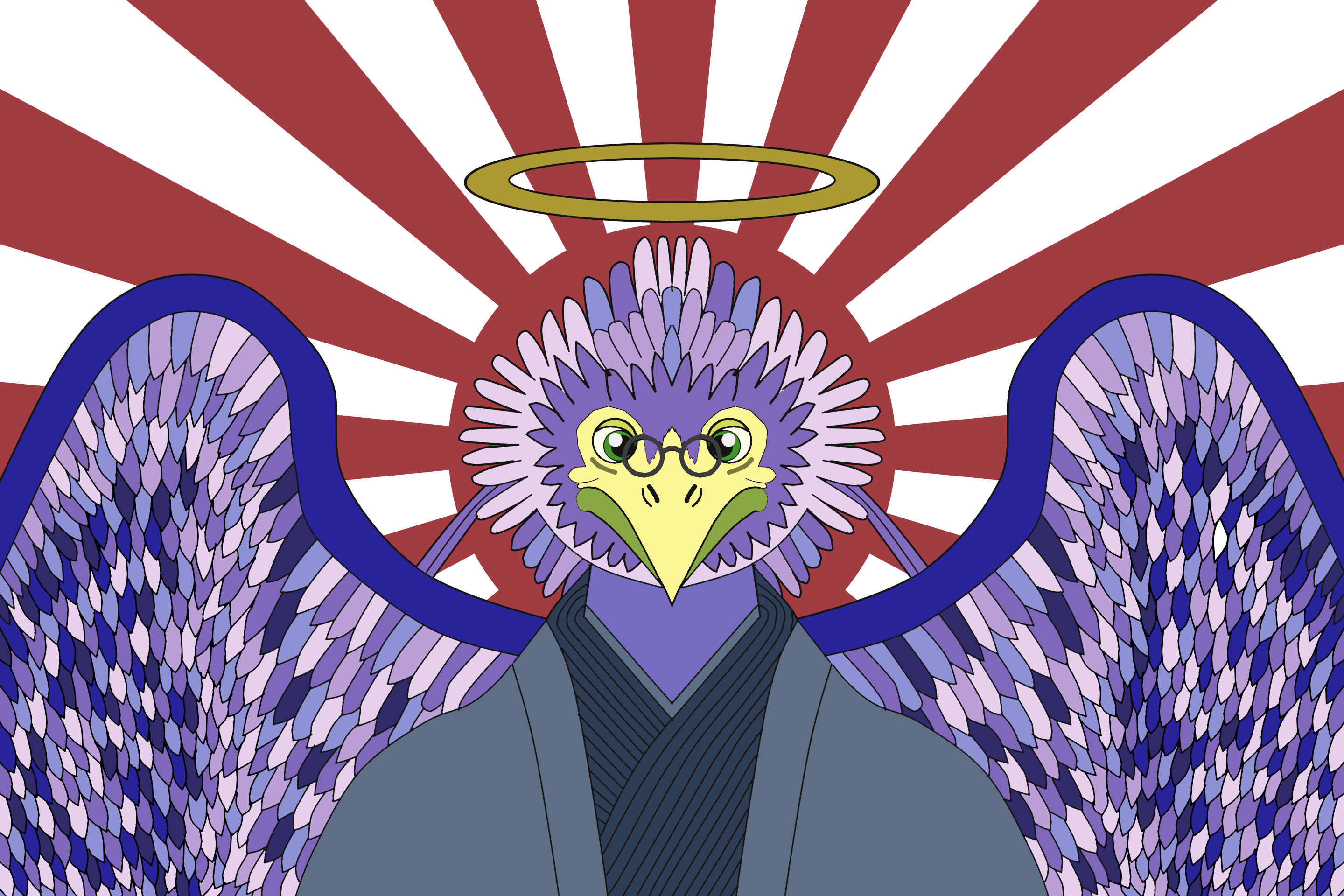
It took several days to do this since I was distracted by other things, but here’s my tribute piece to the late Akira Toriyama, modeled after Empyrea the eagle from Dragon Quest VIII: Journey of the Cursed King. I used the old Imperial Japanese Army flag since the sun is in the center rather than the Navy flag, where it isn’t.
Also, I’m super-addicted to AI art, so here’s what I’ve generated in the past few days:
Here’s an example of anthro otters in Toriyama’s style:
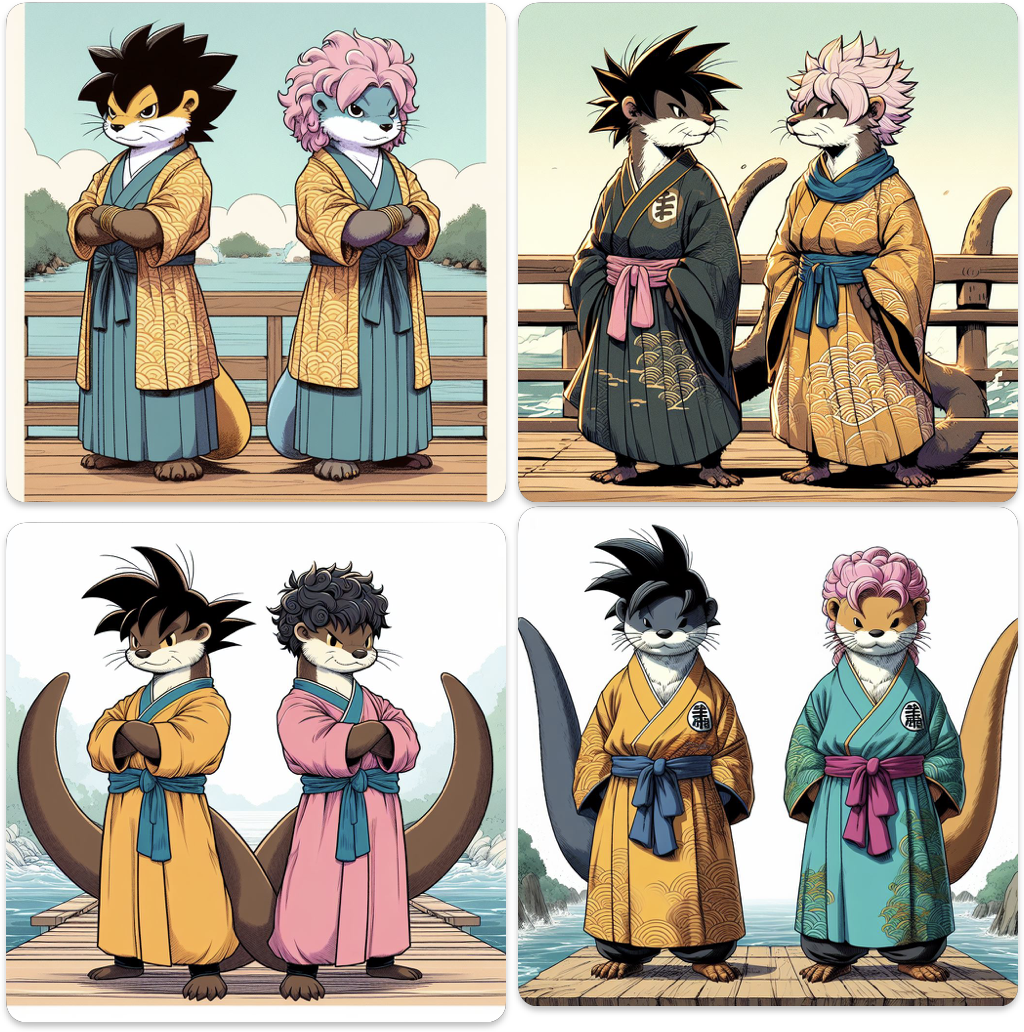
Today was Yukon Heritage Day in Canada, so I decided to use Bing Image Creator to generate Dall sheep, one of the mammals that inhabit the Canadian Territory, serving the RCMP:

Since today was the Emperor of Japan’s birthday as well, I decided to depict him in tanuki form:

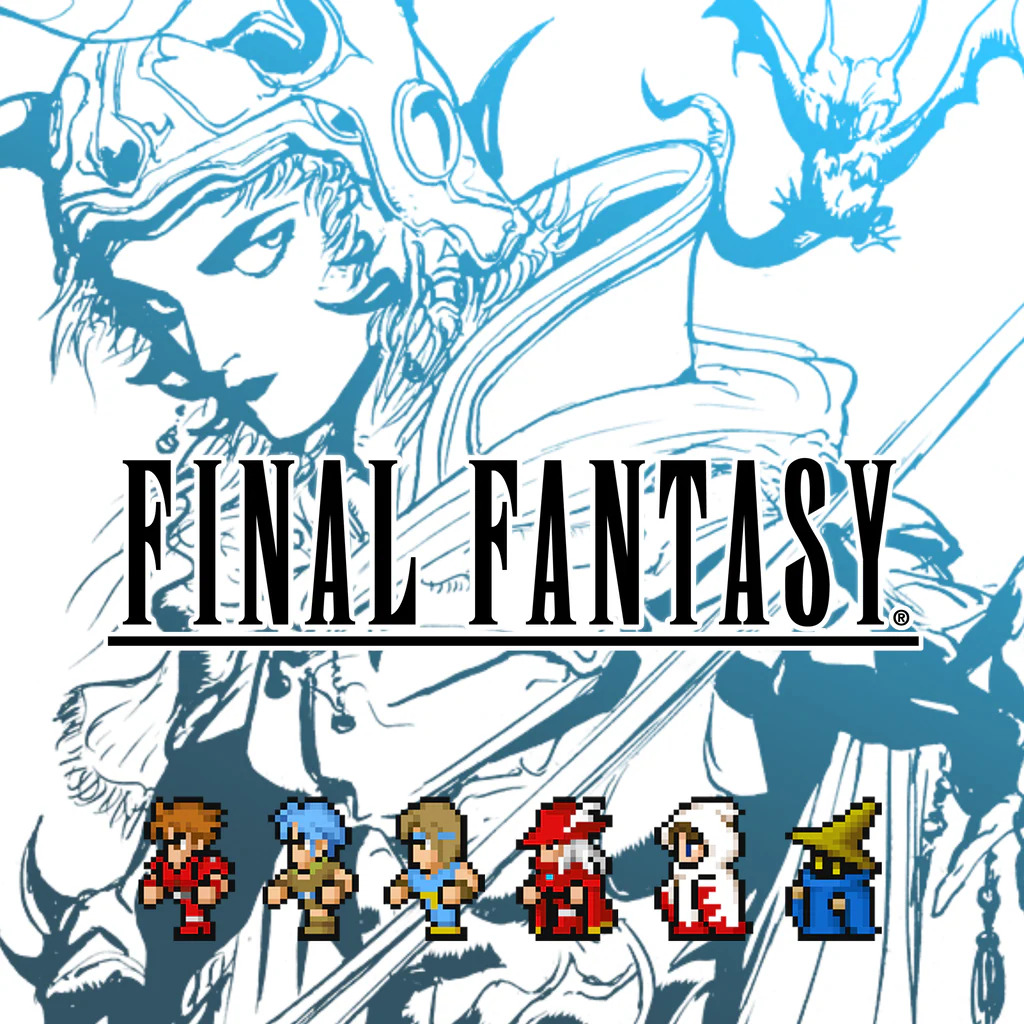
The very first installment of Squaresoft’s (now Square-Enix’s) Final Fantasy series, thus named because it intended to be the company’s very last game, saved them from bankruptcy and led them to turn it into a franchise that would enjoy widespread popularity in Japan, but not so much beyond, particularly in North America, thanks to renumbering of mainline entries that did see English releases and occasional retitling of Square games without the series such as the original Game Boy SaGa titles. North Americans would eventually receive ports of the Japan-exclusive WonderSwan Color remake of the first game and its first sequel, the real Final Fantasy II, as part of the PlayStation collection Final Fantasy Origins, published in Squaresoft’s twilight years prior to its merger with Enix.
The first two Final Fantasies, along with their sequels up to VI, would see countless ports and rereleases, and while contemporary mainstream players would appreciate their widespread availability, there would emerge a niche group of gamers that considered the old-school aesthetics of the initial six entries untouchable, which would lead Square-Enix to develop new remakes of them as Final Fantasy Pixel Remasters, attempting to compromise the eight and sixteen-bit pixel spritework of the original versions with modern touches. The games would start to release on Steam, iOS, and Android in 2021 before seeing Nintendo Switch and PlayStation 4 ports two years later. Does the first of them, Final Fantasy Pixel Remaster, warrant a play from modern audiences?
One element retained from the previous remakes and rereleases of Final Fantasy is the backstory of the primary four elemental forces of the world, earth, fire, water, and wind, declining, four Light Bearers destined to restore balance. The narrative’s present begins with said warriors rescuing Sarah, a princess of Cornelia, from the clutches of the fallen royal knight Garland in the Chaos Shrine, after which comes the repair of the bridge connecting the kingdom to the mainland and the beginning of their main journey. Throughout most of the game, the narrative takes a backseat, with the player’s customizable party not having much development, although there are some occasional background tidbits and greater revelations about Garland towards the end.
The translation contains plentiful polish, with believable dialogue, a lack of spelling, grammar, and punctuation errors, and good naming conventions, except perhaps for the name Garland as the initial villain, given its association with flowers and the late actress Judy Garland. Furthermore, while many players have complained about the default “ugly font” for the main dialogue, I honestly couldn’t see what the problem was with it. The latest versions of the Pixel Remasters allow players to select a “classic” font that contains old-school pixilation, although I personally found it to be “uglier” than the “modernized” font. Still, the latest remake’s localization is far more than competent.
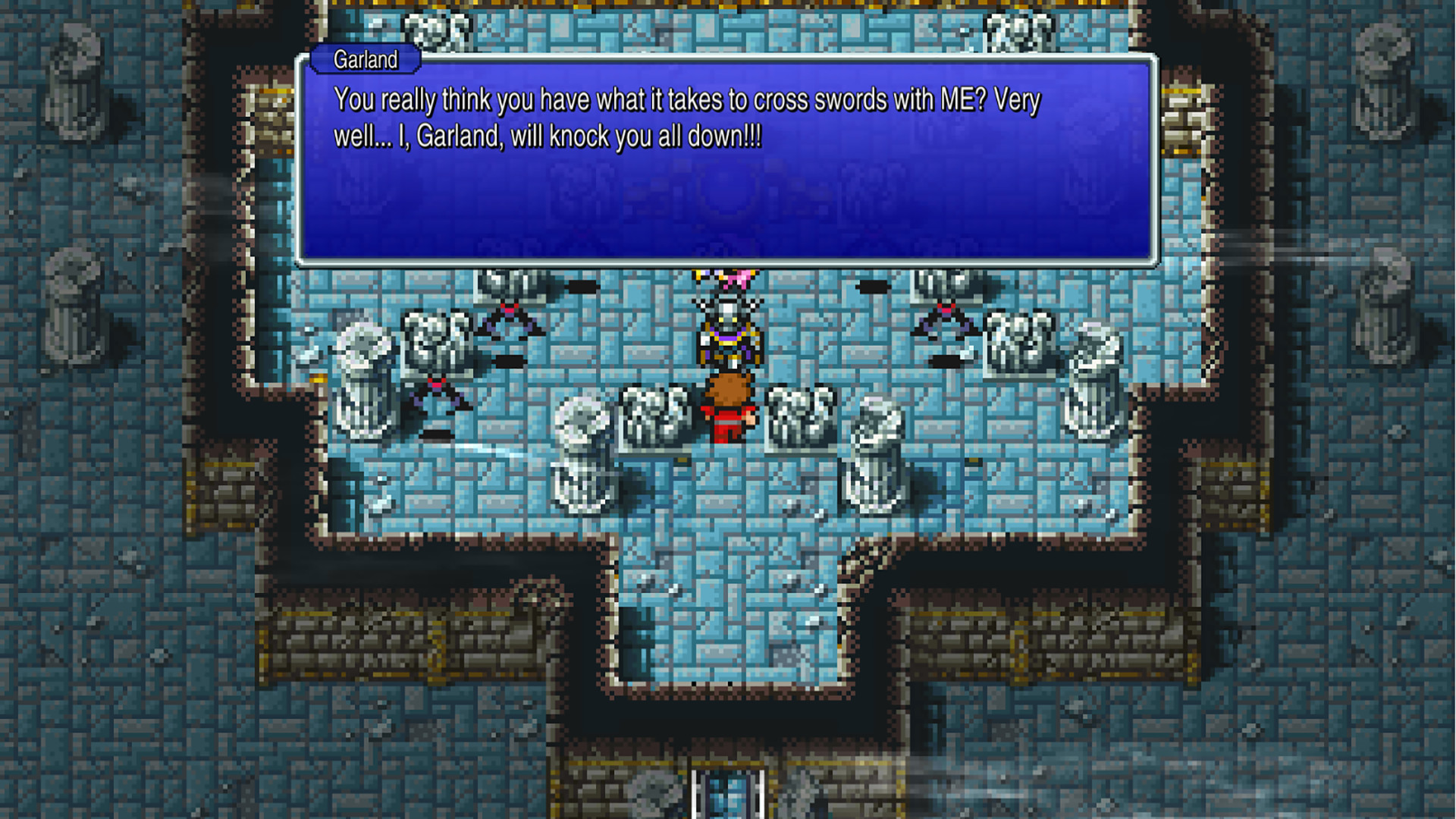 He certainly won’t do so through song and dance.
He certainly won’t do so through song and dance.
When starting a new game, the player can choose and name a party of four playable characters from six different classes: warrior, thief, monk, red mage, black mage, and white mage, each with its own pros and cons. For instance, warriors can equip powerful weapons and armor but aren’t very good magically, monks can ultimately deal far more damage without weapons than with yet are weak in terms of defense, and black and white mages can respectfully cast attack and healing magic yet aren’t adept with physical attack or defense. The thirty possible party combinations (unless my math is incorrect) adds plentiful lasting appeal alongside the PlayStation Trophies and other factors.
The base game mechanics remain largely unchanged from the post-Nintendo Entertainment System versions. Encounters are random (although there are occasional monster sprites the player’s active character can “talk to” to trigger a battle and disappear afterwards), with whatever party the player had selected when beginning a new game squaring off against a multitude of enemies that could number as high as nine. Combat is turn-based, with each character having several options such as attacking with their equipped weapons, casting magic (in which case the Pixel Remaster divides magic points into eight separate tiers akin to the NES and PlayStation versions), using a consumable item, defending to reduce damage, or attempting to escape.
Once the player has inputted their party’s orders, they exchange commands with the enemy, with exact turn order, akin to most other classic Japanese RPG contemporaries such as the Dragon Quest games, tending to be random, and resulting in undesired situations such as enemies killing characters low on health before they get a chance to heal. Once a round has passed, the player can input new commands or trigger the turbo mode to have them repeat the last turn’s orders as they can do anytime while both sides are exchanging blows. Battles end either when all enemies or the player’s characters are dead, the former instance netting all who are still alive experience for occasional level-ups, money, and maybe the occasional item, and the latter case resulting in a trip back to the title screen.
While the Pixel Remaster doesn’t allow players to record their progress anywhere like the Game Boy Advance versions, the game does autosave whenever they transition between floors in a dungeon, providing a minor safeguard against squandered playtime. A new feature native to the PlayStation 4 and Switch ports is the Boost system, where the player can toggle on/off random encounters and as much as quadruple experience and money acquired from combat, really taking the edge off some of the old-school grind and brutality for those seeking a more casual experience, likely newcomers to the franchise. Consequentially, even standard boss fights can breeze by, although the final boss can still take time, even at high levels.
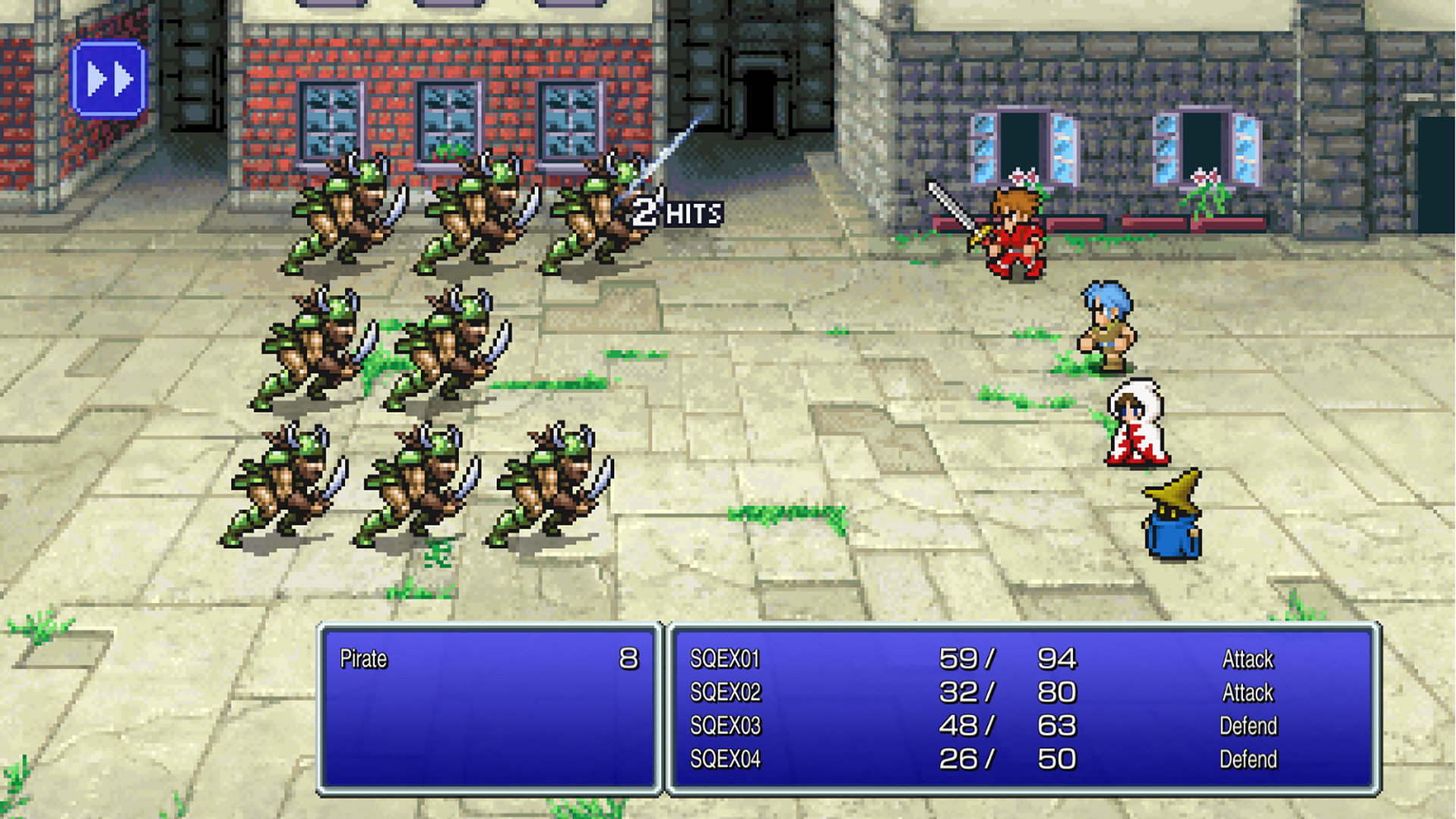 A pirate’s death for them.
A pirate’s death for them.
As with most classic RPGs, Final Fantasy features an explorable overworld serving to connect all towns and dungeons. One handy feature is that players can set the active character to autodash, although for some odd reason, movement on the world map is still at walking speed; however, one can move the current character sprite diagonally, restricted to four directions in prior incarnations. Menu navigation, maintaining characters, and shopping are easy tasks as well, and a suspend save is available alongside autosaving and hard saves. The overworld and dungeon maps (the latter new to the Pixel Remaster) are also incredibly helpful, and aside from the issue with world map movement and the lack of direction on how to advance the central storyline at times (although speaking to every possible NPC can give some clues), the game largely interacts well with players.
The latest version of the original Final Fantasy really went all-out when it came to the soundtrack, now fully orchestrated. Signature series songs such as the prelude and main theme that would recur in future installments sound glorious, with those native to the first entry sounding nice as well. From the bombastic overworld theme to notable dungeon tracks such as one loosely mimicking Nikolai Rimsky-Korsakov’s “Flight of the Bumblebee”, that for Mount Gulg (which sounds much better in the Pixel Remaster), and the haunting techno track for the Flying Fortress, alongside the energetic battle themes, virtually nothing goes amiss with the music, save perhaps for the occasional tendency for the primary combat music to loop in longer fights. The minor jingles such as those for victory in combat and important item acquisition, are endearing as well, and nothing is wrong with the sound effects either. Generally, the remaster’s aurals are near-note perfect.
As mentioned, the Pixel Remaster’s visuals combine elements from the original WonderSwan remake and its countless ports, with the scenery largely looking the same, both nice and colorful, certainly not a bad thing, although the biggest difference lies in the sprites representing the human characters, largely paralleling those in the NES version in terms of appearance and animation. The monster designs mostly remain unchanged from the prior remakes and ports, their biggest issue being the myriad of palette swaps. The other graphical issues from previous iterations, including the telekinetic physical attacks and inanimation of the enemies themselves, still exist, and while the graphics along with the plot are probably the weakest area of the remaster, they still have their charms.
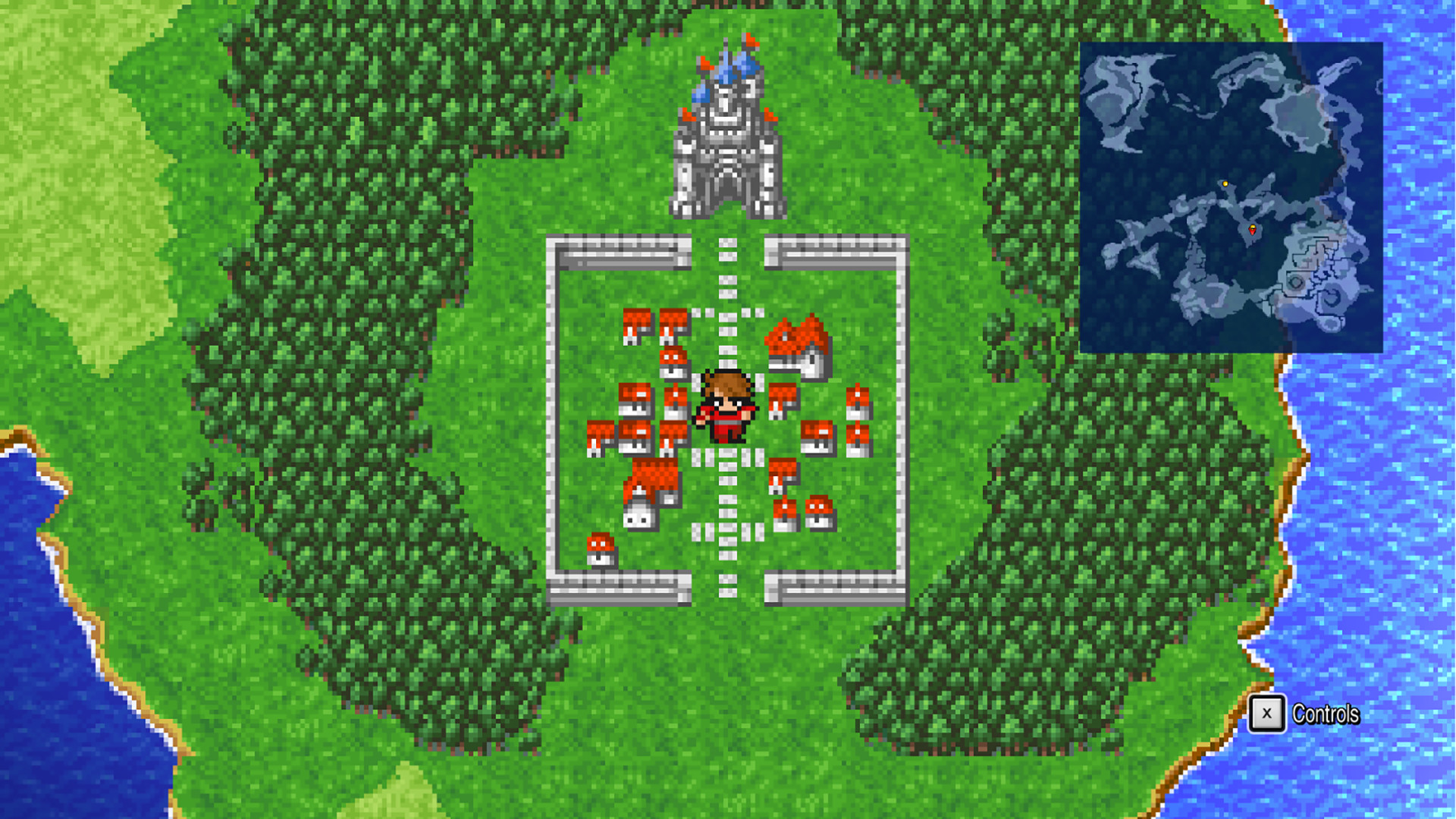 Where the entire franchise begins.
Where the entire franchise begins.
Finally, the latest remake is short compared to contemporary RPGs, around six to twelve hours for a straightforward playthrough, with the mentioned class combinations and Trophies, along with completing the bestiary, adding significant replayability.
Overall, those who have experienced prior versions of Final Fantasy might find themselves “burned out” when it comes to replaying the game, although newcomers will assuredly find the Pixel Remaster to be an excellent diving board into the franchise, given its potential forgiveness in terms of the old-school mechanics, the solid control, above-average audiovisual presentation, and plenty reasons to come back for more. Its biggest issues like within the underdeveloped narrative and, ironically, the remastered graphics, but those who don’t consider those issues to be critical when purchasing and playing video games will undoubtedly be in for a classic treat.
This review is based on a single playthrough of a digital copy purchased by the reviewer alongside the other Pixel Remasters and downloaded to his PlayStation 4 with a Warrior, Monk, White Mage, and Black Mage.
| Score Breakdown | |
|---|---|
| The Good | The Bad |
| Boosts take edge off old-school grind and brutality.In-game maps are very helpful.Excellent remastered soundtrack.Plenty lasting appeal. | Dated aspects of gameplay mechanics still prevalant.Newcomers could easily get lost in world.Minimalist plot.Visuals contain dated elements like reskins as well. |
| The Bottom Line | |
| The definitive version of the first Final Fantasy. | |
| Platform | PlayStation 4 |
| Game Mechanics | 8.0/10 |
| Control | 8.5/10 |
| Story | 7.5/10 |
| Localization | 9.5/10 |
| Aurals | 9.5/10 |
| Visuals | 7.5/10 |
| Lasting Appeal | 9.0/10 |
| Difficulty | Adjustable |
| Playtime | 6-12 Hours |
| Overall: 8.5/10 | |
 BEASTARS, Vol. 8 by Paru Itagaki
BEASTARS, Vol. 8 by Paru Itagaki
My rating: 4 of 5 stars
As with its precursors, the eighth volume of mangaka Paru Itagaki’s Beastars series opens with a welcome synopsis of past events and a list of dramatis personae, the action beginning with Legoshi the wolf being absent from school again, returning with the major difference that he’s had his fur shaven off. Since he had been having all-night training with Gohin, the giant panda therapist of the carnivorous black market, he fails to stay awake in class. Part of the lupine’s training involves meditating before dangling meat, resisting the temptation to consume it and transforming his metabolism. Back at school, other students notice Legoshi’s disinterest in stagehand work, with one of the herbivorous drama club members, Pina, attempting to provoke the wolf into devouring him.
Meanwhile, Cosmo the deer works in a strip club, dancing in a stage that the carnivorous customers want removed, with prostitution as a side job. Going outside for a smoke break, she encounters the red deer Louis, who, together with the Shishi-gumi, saves her from devourment. Afterward, the cervine talks to his adoptive father about resigning from Cherryton and getting his signature for approval, even holding him at gunpoint to get him to sign. However, his father remains surprisingly cool, with Louis ultimately deciding to take a leave of absence instead and accepts his foster son’s leadership of the lion-populated criminal organization.
When Louis notices the shaven Legoshi attempting to comfort a wayward child, he disdains his friend’s compassion whilst asserting his leadership of the Shishi-gumi, who then clash with the jaguar-populated rival mafia the Madara-gumi. Back in his training chamber, Legoshi touches the meat that had been dangling before him, and Gohin gives him a bag to take to the beach, whose remnants he buries, even putting names on the graves’ headstones, which elates the giant panda. At school, Juno thinks Legoshi weird for wanting to see the interior of her mouth, noting the greater development of male canines, which he thinks key to finding Tem’s killer.
After losing a tug-of-war involving the use of jaws instead of hands and arms to Bill the tiger, Legoshi flashes back to his second-year physical and notes that his bite has weakened significantly. When he reenters his training, Gohin and his pupil attempt to capture a stray hyena, resulting in one of Legoshi’s arms being bitten. The giant panda has his student attempt to stitch his own wounds, having flashbacks to when he rehabilitated a murderous red fox instead of handing him over to the police (and gives other key backstory), and affirms his sense of justice. Back at school, Haru feels distant from Legoshi, noting that another boy asked her to go out with her, which creates some awkwardness.
The eighth volume ends with a leopardess and an ewe shopping and taking a selfie, hoping to contribute to peace between herbivores and carnivores, and some anecdotes about self-absorbency and a female pop idol group. Like its predecessors, Volume 8 is an enjoyable read, with plenty of endearing anthropomorphic animal characters and some good sociopolitical commentary about divergent groups, although again, Itagaki seems to overlook the concept of omnivorous animals, which would surely be far better liaisons between the warring carnivorous and herbivorous factions rather than a member of one extreme or the other.
View all my reviews